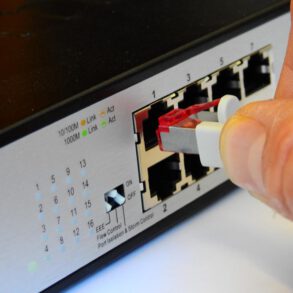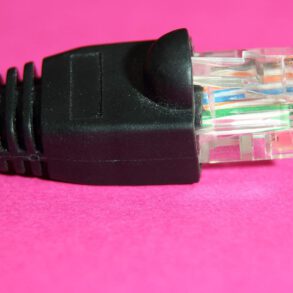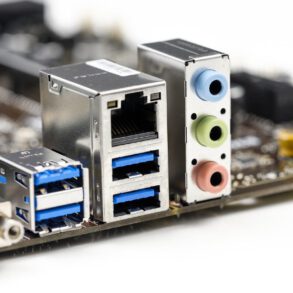Establishing a computer network allows computers to communicate with one another. In a home setting, you can transfer files and share file folders with another computer; you can attach a printer, scanner, copier or fax machine so that all computers attached to the network can use those devices without having to be individually connected to them. With a wireless network, you can eliminate cables and move freely about your home with a mobile device such as a laptop.
Network Topology
A basic network is defined by its “topology.” This word describes the physical blueprint of your network connections, viewed from a top-down perspective. You’ll see this word used most often in the business world, where an overall topology can span not just buildings but entire regions of the country. In your home, the topology contains your computers, their network connection hardware, other devices on the network and how this setup connects to the Internet, if applicable.
Interface Cards
Physically, each computer must have a NIC (Network Interface Card). Nowadays, manufacturers commonly integrate this NIC into a computer’s motherboard, but you can buy a separate card if the integrated solution does not fit your needs. Generally, your local area network (LAN) can transmit and receive data much faster between computers than over the Internet. “Gigabit Ethernet” is common for LANs now, but even high-speed Internet connections are still defined in terms of megabits; it takes 1024 megabits to equal a gigabit.
Hubs and Routers
In a typical LAN, these NICs will connect to a hub or router (rather than the computers communicating directly to one another); a router contains hub circuitry, but a hub does not contain routing circuitry, which is required to connect to high-speed modems. This hub or router acts as the brain of the network, figuring out where data needs to go and how to do it efficiently. The NICs in your computers will connect to the hub or router with Ethernet cable, which can go hundreds of feet before signal quality becomes an issue. You can also use wireless NICs to communicate over the air to a wireless router. (Hubs are an older technology and not typically found in the wireless variety.)
Open Wireless Networks
With wireless networking, you will need to establish encryption to keep your data and computers safe. Otherwise, your data can be captured by someone nearby as easily as tuning into a radio station, and your computers are potentially open to intrusion since they haven’t been instructed to only tune in to the computers on your network. Someone physically nearby can also “piggyback” on to your network’s Internet connection and use it for potentially illegal activities.




